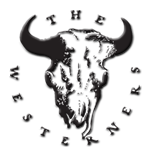Roundup: May 11 2022
Final-Westerners-May-11-2022-Roundup-Flyer
Roundup Synopsis
Paul Clark took the reins in May, to present us with the exhilarating tale he called “The Rise of the Gasoline Cowboys: Outdoor Motorcycle Recreation in PreWWII California.” A rough and tough subject like this was sure to please those in attendance, just as it must have pleased Ernest Hemingway, to whom the quote which Paul selected is attributed, “There are only three sports: bullfighting, motor racing, and mountaineering; all the rest are merely games.” Let’s get on with the sport, then. Paul described the first motorcycle—and he used the term loosely—as a two-wheeled, steam-powered monstrosity, the painting of which showed two stokers following closely behind to keep it fired; hardly reasonable, but the idea was there. As gasoline engines matured, the concept was revived, this time as a three-wheeled contraption resembling early wheelchairs. The shape we have come to expect was introduced around the turn of the century, and Harley-Davidson and Indian quickly became the premier U.S. brands. In the early years, the motorcycle’s popularity followed its practicality. As it became more reliable and affordable, it became more widespread, with numbers in Los Angeles expanding from a few hundred in 1905, to 3000 in 1910, to 7500 by 1917. The reason for the popularity of L.A. as a haven for enthusiasts was the quality of roads and the quality of the weather; you can get a much better return on investment if you are able to ride year-round, as you can in Southern California. Motorcycle clubs sprang up throughout California starting with the Indian Motocycle Club in Los Angeles in 1904. So new was the fad, that they hadn’t even settled on weather they rode “motor-cycles” or “moto-cycles.” These early clubs were keen to be seen as respectable types, which meant that their members showed up to events in their Sunday best and invited photographers and newsmen to document their fine behavior. The publicity seemed to help with popular acceptance of the new machines. What helped even more were organized rallies exhibiting these bikes’ capabilities. Races on dirt and banked wooden ovals, hill climbs, and desert crossings wowed crowds, and newsreels captured the imagination of the region. Hill climbs were the most popular events, with the Capistrano Hill climb drawing an estimated thirty to fifty-thousand attendees by the early 1920s. While these daredevils were risking life and limb storming up hills, the L.A. Motorcycle Club organized “picnic runs” for its members to cruise sedately on the weekends. Endurance racing became more popular as the cycles improved to the point where they could actually endure. With the onset of Prohibition, an L.A. to Tijuana race was organized and billed as a race to a place “where the bar-rigs are still saturated with stronger stuff than grape juice.” 1920 saw the start of the iconic Big Bear “Hare and Hound” Annual Classic, a midnight run on New Year’s Day that ran until 1960. With the onset of WWII, the motorcycle community packed up and went to war. When they returned, the machines they rode were changing, and so was the country. Motorcycle riding was no longer as respectable as it had been prior to the war, and the culture surrounding it changed drastically from its original form. Like with so much else, the Second World War had forever altered part of the American lifestyle. — Alan Griffin
Photos from the Roundup
TBD



